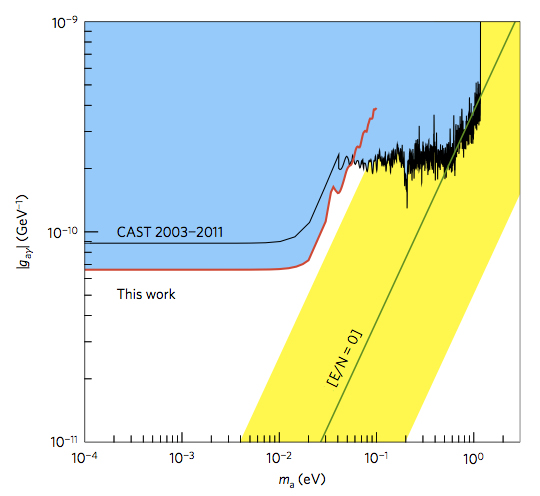Julia Vogel (17-ERD-030)
Executive Summary
This project focuses on design and modeling of the first full International Axion Observatory telescope specifically designed for axion research and cutting-edge dark matter science. Our development of advanced x-ray optics will benefit areas of interest to DOE/NNSA by advancing fundamental science and technology competencies, and supports advances in diagnostics for laser fusion facilities and for nuclear nonproliferation.
Project Description
Though experimentally confirmed, the Standard Model of particle physics still falls short of explaining the nature of dark matter, which is a crucial component of the universe though its constituents are unknown. Axions are leading dark matter candidates, but experiments have yet to confirm or refute the existence of this elusive particle, and the search is challenging because the axion mass is not known a priori. We are playing a leading role in the scientific analysis of the current Livermore International Axion Observatory pathfinder optic installed at the CERN Axion Solar Telescope, with the goal to either detect axions or axion-like particles or put new stringent limits on their existence. We are also using lessons learned from the pathfinder optic to design and model the first full International Axion Observatory telescope. This project will enable us to develop the first-ever full-revolution telescope specifically designed for axion research and cutting-edge dark matter science, while establishing the Laboratory’s leadership role in the International Axion Observatory. The Laboratory's active role in both axion research and x-ray optics technology affords a unique opportunity to leverage Livermore's deep expertise in astrophysical instrumentation and particle physics to position the Laboratory for participation in next-generation astrophysical and particle physics experiments.
Mission Relevance
Participation in space science is an important element in Livermore's space security mission research challenge. Providing next-generation capabilities for space security requires a trained workforce with demonstrated excellence in designing, fabricating, and performing science with advanced instrumentation. Our work with a Livermore-built x-ray telescope and the design of a next-generation optic for axion dark matter searches using space science technology will establish and strengthen the Laboratory's preeminence in astroparticle physics, dark matter searches, x-ray optics, and instrumentation technology. The development of advanced x-ray optics also benefits areas of interest to DOE goals in science and energy and nuclear security with advances in diagnostics for laser fusion facilities and for nuclear nonproliferation.
FY17 Accomplishments and Results
In FY17 we (1) advanced optics work for the International Axion Observatory by considering prototype calibration data and evaluating the impact of these results on the final optical design of the telescope and its multilayer coating; (2) compared experimental data to our ray-trace simulations (calculating the path of waves or particles through a system with varying characteristics) and confirmed that the International Axion Observatory prototype performed exactly as expected in terms of throughput and spatial resolution; and (3) strengthened LLNL’s leadership position in the International Axion Observatory by participating in and contributing to collaborative internal meetings as well as representing the experiment at various conferences.
Publications and Presentations
Anastassopoulos, V., et al. 2017. "CAST Solar Axion Search Achieves Forefront Sensitivity." Nature 13 (584). LLNL-JRNL-727500.
Pivovaroff, M. J. 2017. "US Cosmic Visions: New Ideas in Dark Matter 2017: Community Report." LLNL-PROC-739049.
Vogel, J. K., J. Ruz, and M. Giannotti. 2017. "IAXO, Next Generation of Helioscopes." Proceedings of Science. ICHEP2016. 195. LLNL-JRNL-739048.
   





